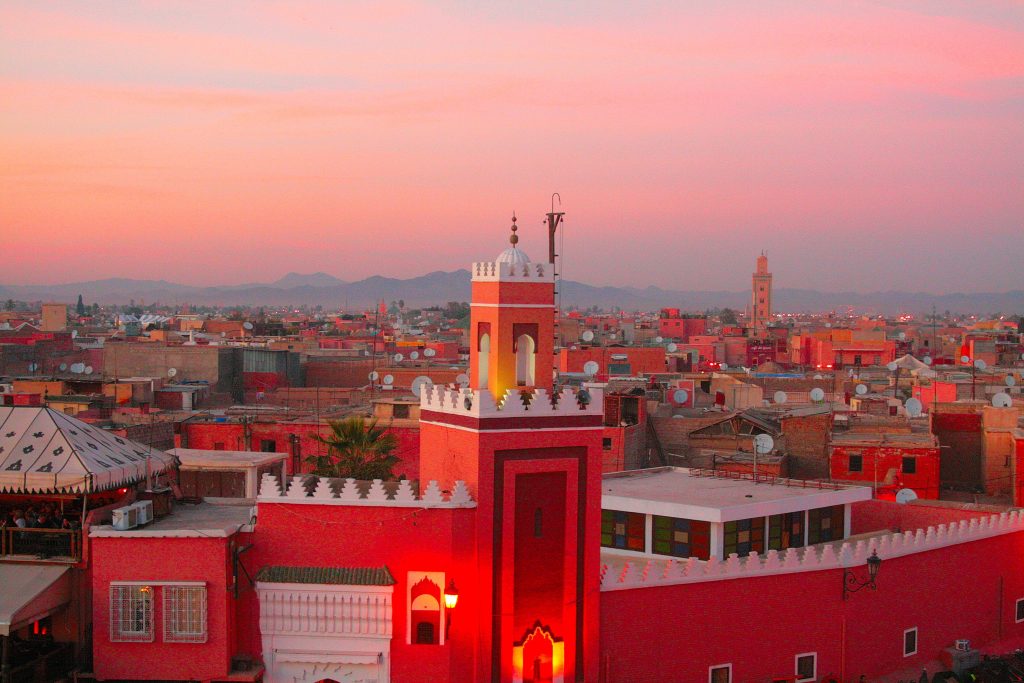Explore Morocco’s Governmental System and The Red City: Unraveling its Origins. Clone
- Monarchy: Morocco has a constitutional monarchy, with the King of Morocco serving as the head of state. The monarchy holds significant symbolic and religious importance in the country.
- Parliamentary System: Morocco has a parliamentary system, meaning that the executive branch derives its legitimacy and political power from the legislative branch (parliament). The Parliament consists of two chambers: the lower house, known as the Assembly of Representatives (lower house), and the upper house, known as the Assembly of Councillors (upper house).
- Head of Government: The Prime Minister of Morocco is the head of government. The King appoints the Prime Minister from the political party that has won the most seats in the parliamentary elections. The Prime Minister is responsible for running the government and implementing policies.
- Multi-Party System: Morocco has a multi-party system, with various political parties participating in elections. The political landscape in Morocco is characterized by the presence of multiple parties, each with its own ideologies and agendas.
- Executive Power: The executive power is vested in the government, led by the Prime Minister. The King’s role is largely ceremonial, with the monarch’s powers being limited by the constitution.
- Legislative Power: Legislative power is shared between the government and the two chambers of parliament. The parliament plays a crucial role in passing laws, scrutinizing the government’s actions, and representing the interests of the Moroccan people.
- Constitution and Judiciary: The Moroccan Constitution outlines the structure of the government and the distribution of powers. Additionally, there is an independent judiciary that is separate from the executive and legislative branches, ensuring a system of checks and balances.
Key Figures
| Chief of State: King Mohammed VI |
| Head of Government: Prime Minister Aziz Akhannouch |
Overview
| Government Name: Kingdom of Morocco |
| Constitution: Adopted: 1992; Contains a portion regarding basic principles and defines the different aspects of government and their relationship with the monarchy. |
| Government Type: Parliamentary Constitutional Monarchy |
Government Branches
| Branches | Main Powers | Election Process | Election Cycle 1 |
|---|---|---|---|
| Executive | King acts as both the secular political leader and the “Commander of the Faithful,” presides over the Council of Ministers, and appoints various members of government. Prime minister serves as the head of government of Morocco. | King is hereditary, prime minister is appointed by monarch but must be chosen from the largest party in parliament. | Life appointment |
| Judicial | Supreme Court serves as the apex court in Morocco. | Appointed by the monarch upon the recommendation of the Supreme Council of the Judiciary. | Life appointment |
| Legislative | Majlis al-Mustacharin revise the constitution, help with budgetary matters, approve bills, question ministers, and establish ad hoc commissions of inquiry to investigate the government’s actions. The Majli al-Nuwab (lower chamber) may dissolve the government through a vote of no confidence. | Majli al-Mustacharin members are elected by indirect vote. Majli al-Nuwab members are elected by proportional representation in multi-member constituencies. | Majlis al-Mustacharin: 6 years; Majlis al-Nuwab: 5 years |
Explore The Red City in Morocco and Why it is called The Red City
The Red City (MARRAKECH) is the fourth largest city in Morocco. It is one of the four imperial cities of Morocco and the capital of the Marrakesh–Safiregion. It is west of the foothills of the Atlas Mountains.
- Red City and Medina:
- The nickname “Red City” is attributed to the reddish-brown buildings and ramparts made of beaten clay, constructed during the Almohad dynasty.
- The medina (old town) is surrounded by 12th-century walls.
- Jamaa el-Fna Square:
- Described as the heart of the medina, Jamaa el-Fna square is a vibrant marketplace.

- Architectural and Historical Landmarks:
- Kutubiyyah (Koutoubia) Mosque with a notable 253-foot minaret, built by Spanish captives in the 12th century.
- Saʿdī Mausoleum from the 16th century.
- Dar el-Beïda Palace (18th century, now a hospital).
- Bahia royal residence (19th century).
- City Walls and Gates:
- The medina is still surrounded by 12th-century walls, with the Bab Agnaou gate being particularly notable.
- Modern Quarter (Gueliz):
- Gueliz, located to the west of the medina, developed during the French protectorate.
- Parks and Gardens:
- Menara olive grove and the 1,000-acre Agdal gardens are highlighted.
- Mention of an ancient irrigation system built under the Almoravids still being used for watering the city’s gardens.
- Luxurious Properties:
- Marrakech is noted for its high-end and luxurious properties, contributing to its status as a destination for luxury tourism.
Marrakech captures the rich historical and cultural tapestry of Morocco, showcasing its blend of ancient architecture, traditional markets, and modern developments. The city’s gardens, parks, and upscale accommodations add to its allure for visitors seeking both cultural and luxury experiences.
